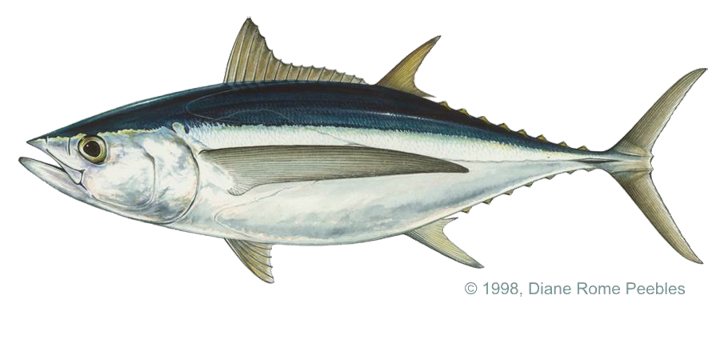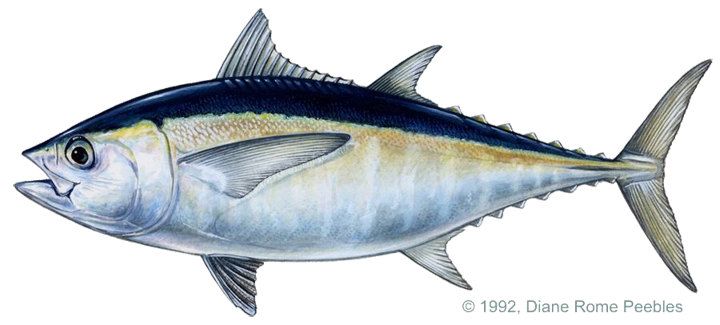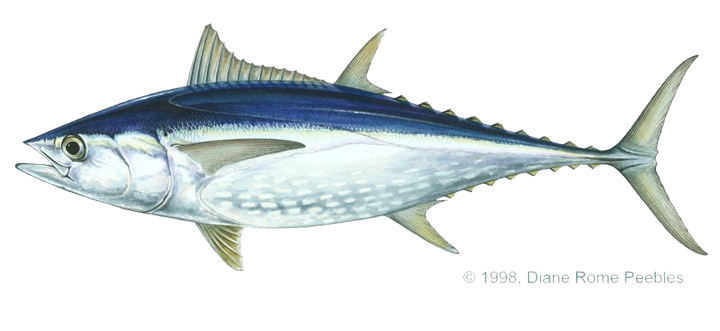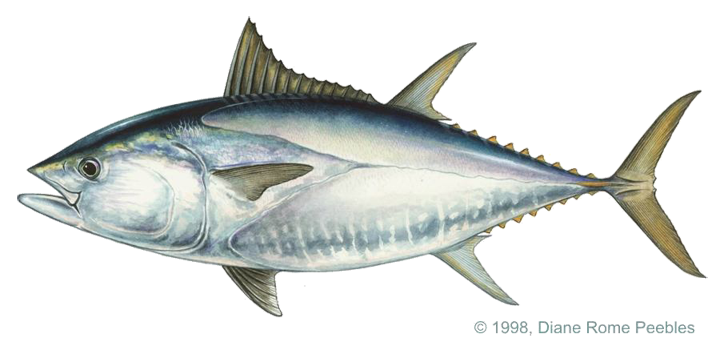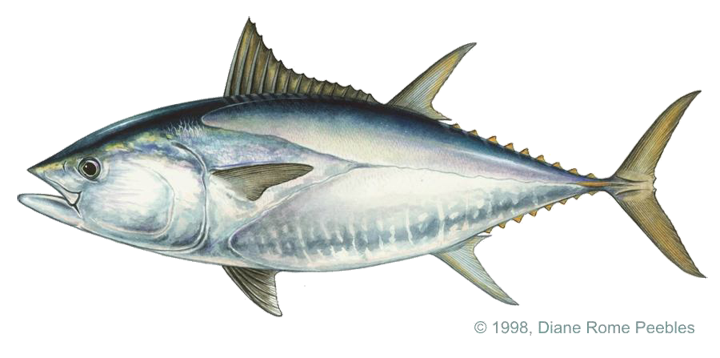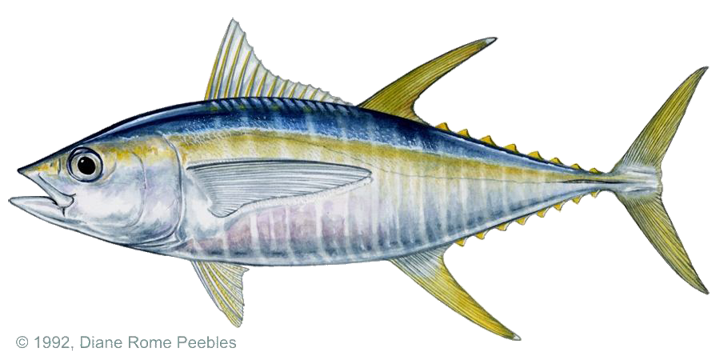Game Fish Identification Reference Guides
Tuna, bluefin
(Thunnus thynnus)
(Thunnus thynnus)
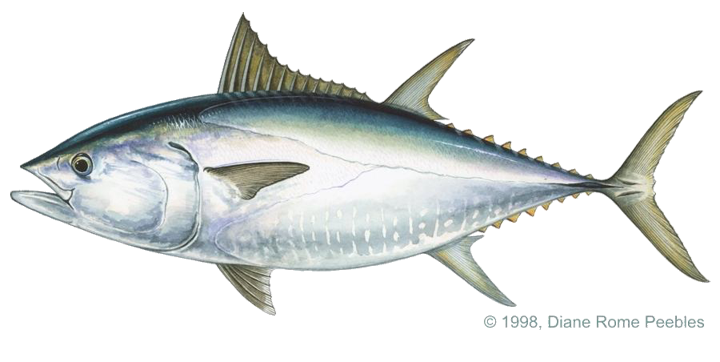
(Linnaeus, 1758); SCOMBRIDAE FAMILY; also called Atlantic bluefin tuna, tunny fish, horse mackerel
Occurs in subtropical and temperate waters of the north Pacific Ocean, the North Atlantic Ocean, and in the Mediterranean and Black seas.
It is a pelagic, schooling, highly migratory species. The smallest fish form the largest schools and vice versa. Its extensive migrations of all fish, appear to be tied to water temperature, spawning habits, and the seasonal movements of fishes on which the bluefin feeds. The giants of the species make the longest migrations.
This is the largest tuna and one of the largest true bony fish. It can be distinguished from almost all others by its rather short pectoral fins which extend only as far back as the eleventh or twelfth spine in the first dorsal fin. There are 12-14 spines in the first dorsal fin and 13-15 rays in the second. The anal fin has 11-15 rays. It has the highest gill raker count of any species of Thunnus with 34-43 on the first arch. The ventral surface of the liver is striated and the middle lobe is usually the largest. The anal fin and the finlets are dusky yellow edged with black. The lateral keel is black in adults.
Its diet consists of squid, eels and crustaceans as well as pelagic schooling fish such as mackerel, flying fish, herring, whiting, and mullet. During spawning which occurs in the summer or spring, a giant female may shed 25 million or more eggs. Bluefins grow rapidly and may be 2 ft (0.6 m) in length and weigh 9 lb (4 kg) by the end of their first year. By age 14 they may be over 8 ft (2 m) long and weigh 700 lb (318 kg).
Fishing methods include still fishing or trolling with live or dead bait such as mackerel, herring, mullet, or squid; and trolling with artificial lures including spoons, plugs, or feathers.
Bluefin tuna are supreme in their size, strength and speed, and are a very important game fish. They are also extremely important commercially in many parts of the worl
Occurs in subtropical and temperate waters of the north Pacific Ocean, the North Atlantic Ocean, and in the Mediterranean and Black seas.
It is a pelagic, schooling, highly migratory species. The smallest fish form the largest schools and vice versa. Its extensive migrations of all fish, appear to be tied to water temperature, spawning habits, and the seasonal movements of fishes on which the bluefin feeds. The giants of the species make the longest migrations.
This is the largest tuna and one of the largest true bony fish. It can be distinguished from almost all others by its rather short pectoral fins which extend only as far back as the eleventh or twelfth spine in the first dorsal fin. There are 12-14 spines in the first dorsal fin and 13-15 rays in the second. The anal fin has 11-15 rays. It has the highest gill raker count of any species of Thunnus with 34-43 on the first arch. The ventral surface of the liver is striated and the middle lobe is usually the largest. The anal fin and the finlets are dusky yellow edged with black. The lateral keel is black in adults.
Its diet consists of squid, eels and crustaceans as well as pelagic schooling fish such as mackerel, flying fish, herring, whiting, and mullet. During spawning which occurs in the summer or spring, a giant female may shed 25 million or more eggs. Bluefins grow rapidly and may be 2 ft (0.6 m) in length and weigh 9 lb (4 kg) by the end of their first year. By age 14 they may be over 8 ft (2 m) long and weigh 700 lb (318 kg).
Fishing methods include still fishing or trolling with live or dead bait such as mackerel, herring, mullet, or squid; and trolling with artificial lures including spoons, plugs, or feathers.
Bluefin tuna are supreme in their size, strength and speed, and are a very important game fish. They are also extremely important commercially in many parts of the worl













